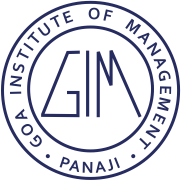General awareness on current topics is essential as not only you will be getting questions on GK in various MBA entrance exams but it will be useful for Essay writing test and WAT also.
Today, you will read General Awareness Topic: “Cash Reserve Ratio (CRR)”
There are many tools with the Central Bank of a country which is Reserve Bank of India (RBI) to control the money supply. RBI controls the money supply in order to tame the inflation and push economic growth. Some important tools available with RBI are Cash Reserve Ratio (CRR), Repo rate, Reverse Repo rate, Bank rate etc. CRR, Repo rate and Reverse Repo are the tools most often used by RBI.
Cash reserve Ratio (CRR) is the amount of funds that the banks have to keep with the RBI. If the central bank decides to increase the CRR, the available cash with the banks comes down. The RBI uses the CRR to drain out excessive money from the system. If RBI decreases CRR, commercial banks will have more cash to lend, thus it will increase the investment in the economy and thus income and growth. Therefore, in inflationary situation, RBI increases CRR while in deflationary situation, it will decrease the CRR.
In current situation, when country is facing low growth along with inflation, RBI favored to curtail inflation and therefore increased CRR to cut money supply in the system. CRR is criticized by many as they lie idle with the central bank in a capital scarce country.
According to Pratip Chaudhuri, chairman of SBI, the annual loss to SBI alone on account of CRR is of the order of Rs3,500 crore which is nearly 30% of the annual declared net profit of the bank of Rs11,707 crore for the year 2011-12. He has, therefore, suggested phasing out of CRR, and its eventual abolition within a reasonable time-frame, as impounding of this large quantum of lendable resources in a capital-scare economy with vast requirement for infrastructure, does not stand to reason.
With a view to give some reprieve to the banks and to persuade them to bring down the lending rates, the finance ministry is reported to have mooted the idea of giving 7% interest on CRR deposits to banks, and then ask them to lower the lending rates, as the RBI has not so far resorted to any easing of the monetary policy. If the RBI concurs with this proposal, the banks will earn interest at 7% p.a., and this will bring down the cost of funds, enabling them to pass on the benefits to borrowers by lowering their lending rates.
Most of the central banks in developed countries have dispensed with the system of CRR and have been using the tool of open market operations to control inflation. While countries like the UK, Canada, Sweden, Australia and New Zealand have zero reserve requirements, USA has a graded system of reserve requirements depending upon the size of the bank.
It starts from zero percent to 10%, but the critical point is that this reserve is not on the total demand and time liabilities of the bank, but on dollar balances only on net transaction accounts, i.e. only on checking accounts, which form a much smaller part of the total liabilities of the bank. And unlike in India, the entire cash held by the banks in their own vaults is considered as reserve and only the balance amount is required to be deposited with the Federal Reserve—the central bank of the US.
Repo and Reverse Repo
Both Repo and Reverse repo are part of Liquidity Adjustment Facility under which RBI sells and purchase government securities to the commercial banks to manage the liquidity in the economy. Under repo, RBI buys securities and injects liquidity in the market and vice versa in the case of reverse repo.
Thus, rate at which the RBI lends money to commercial banks is called repo rate. It is an instrument of monetary policy. Whenever banks have any shortage of funds they can borrow from the RBI. A reduction in the repo rate helps banks get money at a cheaper rate and vice versa. The repo rate in India is similar to the discount rate in the US.
Reverse Repo rate is the rate at which the RBI borrows money from commercial banks. Banks are always happy to lend money to the RBI since their money are in safe hands with a good interest. An increase in reverse repo rate can prompt banks to park more funds with the RBI to earn higher returns on idle cash. It is also a tool which can be used by the RBI to drain excess money out of the banking system.
Update your GK and read General Awareness Topics at MBA Rendezvous






